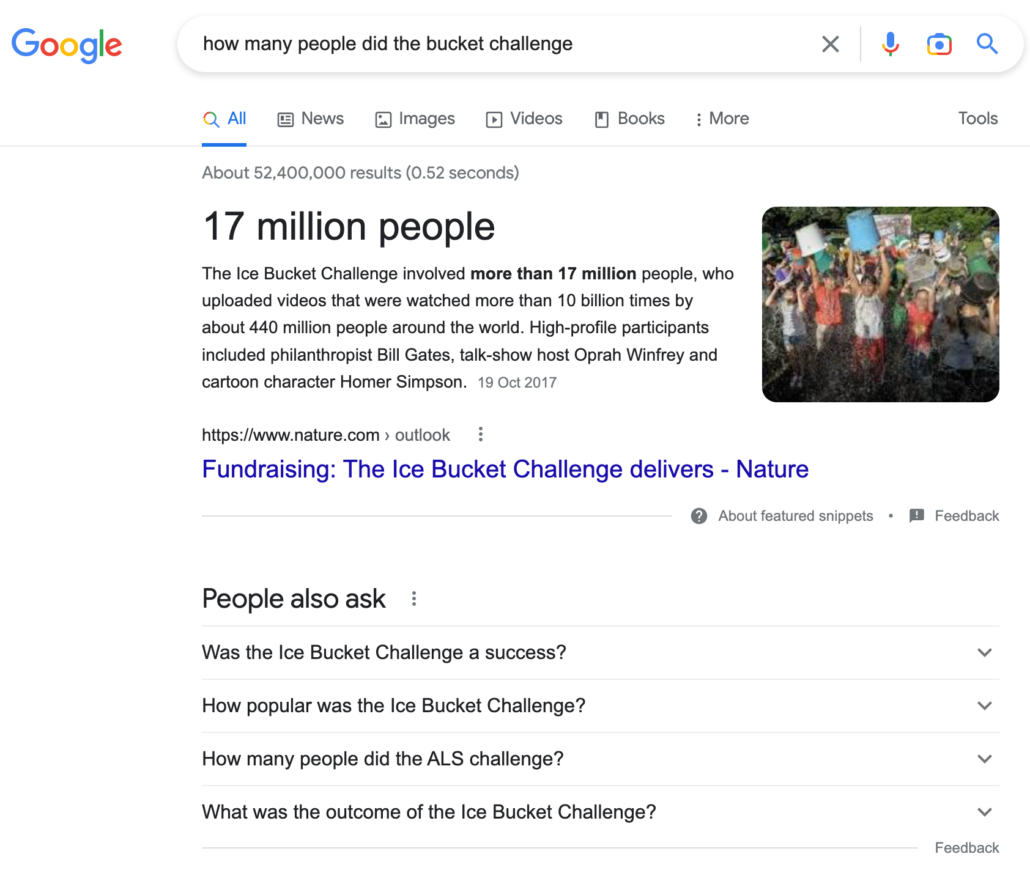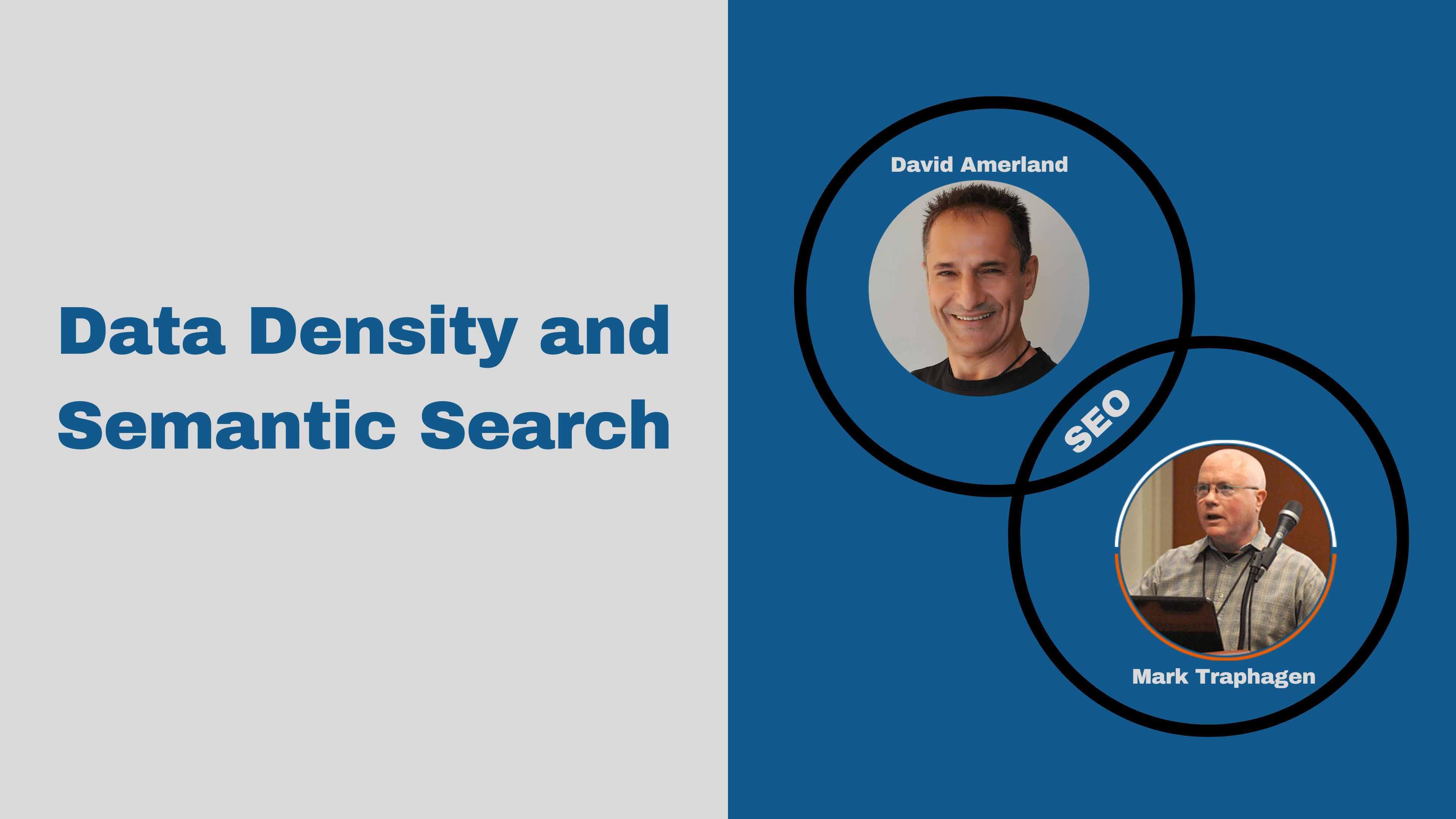What is Semantic Search?
Semantic search is an advanced search technique that uses machine learning algorithms to understand the intent of the user’s search query and provide more relevant results in the search result pages (SERPs).
How Semantic Search Works
The technology is designed to improve the accuracy and precision of search results by analysing the meaning of words, phrases, and concepts used in the query rather than just matching the keywords used by the user.
Example: If you look at the semantic search example below you will notice that Google not only provides an accurate answer but also offers a concise summary of the topic as well as the various details associated with it. It mimics two users engaging, rather than a search engine doing its job of simple data retrieval.

The basic concept of semantic search is to interpret the meaning of the search query and return results that match the intent of the search rather than just matching the keywords used in the query. It probably doesn’t come as a surprise that search engines use artificial intelligence and natural language processing to understand the context of the query and provide results that are relevant to the user.
Traditional vs. Semantic Search
Traditional search engines rely on matching the keywords used in the query with the content on the web page. This approach has limitations, as it may not be able to identify the relevance of the content to the user’s query.
For example, a search for ‘apple’ may return results related to the fruit, the company, or the technology. Semantic search, on the other hand, can identify the context of the query and provide more accurate results based on the user’s intent so if the user wants to buy apples for a healthy gut he or she is not presented with the latest Apple iPhone in the SERPs.
Applications of Semantic Search
Semantic search technology uses machine learning algorithms and natural language processing to analyse the search query and the content of the web pages to understand the context and meaning of the words used in the query. Search engines Like Google and Bing can identify synonyms, related concepts, and contextually relevant information to provide more accurate and relevant search results.
Semantic search technology can be applied to a wide range of applications, including e-commerce, content management systems, and customer service applications like ChatBots. In e-commerce (for example on-site search engine on an e-commerce shop), semantic search can help users find products that match their search query, even if the product description does not use the same keywords used in the query.
In content management, semantic search can help to organise and categorise content more efficiently, making it easier for users to find the information they need. In customer service, semantic search can be used to contextually analyse customer queries and provide relevant responses that truly address the user’s intent hence improving customer satisfaction.
Semantic search technology has become increasingly important with the growth of voice-based search queries. Naturally, voice-based queries tend to be longer and more conversational, making it more challenging for traditional search engines to understand the intent of the user’s query. Semantic search technology can help to overcome these challenges by understanding the context of the query and providing more relevant results.
Benefits of Semantic Search
The benefits of semantic search are numerous. By providing more relevant and accurate search results, semantic search can improve the user experience, increase engagement, and drive more conversions. Semantic search can also help businesses to understand the intent of their customers, identify trends and patterns, and optimise their content to meet the needs of their audience (know your audience to meet their needs).

Challenges of Implementing Semantic Search
Having said that, implementing semantic search technology can be challenging. It requires sophisticated machine learning algorithms and natural language processing capabilities, which can be expensive and time-consuming to develop. Additionally, semantic search technology requires large amounts of high-quality data to train the machine learning algorithms effectively.
Conclusion
In conclusion, semantic search is an advanced search technique that uses machine learning algorithms and natural language processing to understand the intent of the user’s search query and provide more relevant and accurate results. Semantic search can improve the user experience, increase engagement, and drive more conversions.
However, implementing semantic search technology can be challenging, as it requires the creation of sophisticated machine-learning algorithms and the availability of high-quality data. Nevertheless, the benefits of semantic search make it a compelling technology for businesses looking to improve their search capabilities and better understand the intent of their customers.

“Everything you do from now on “have to have meaning“. There are no shortcuts and there are no longer any easy wins in term of rankings. Google now requires proof of concept before anything works for you.
So if you say that you are absolutely the best in something and your website should be there, Google now needs additional proof beyond you saying this on your website.
And the way to do that is trough “relational connections” across the web. So if your website is actually really good at something and your business is great and you are winning in terms of quality and customer experience than is highly unlikely that your website is in the dark side and it’s never mentioned anywhere on the web apart of your own website.” – David Amerland –


Leave a Reply